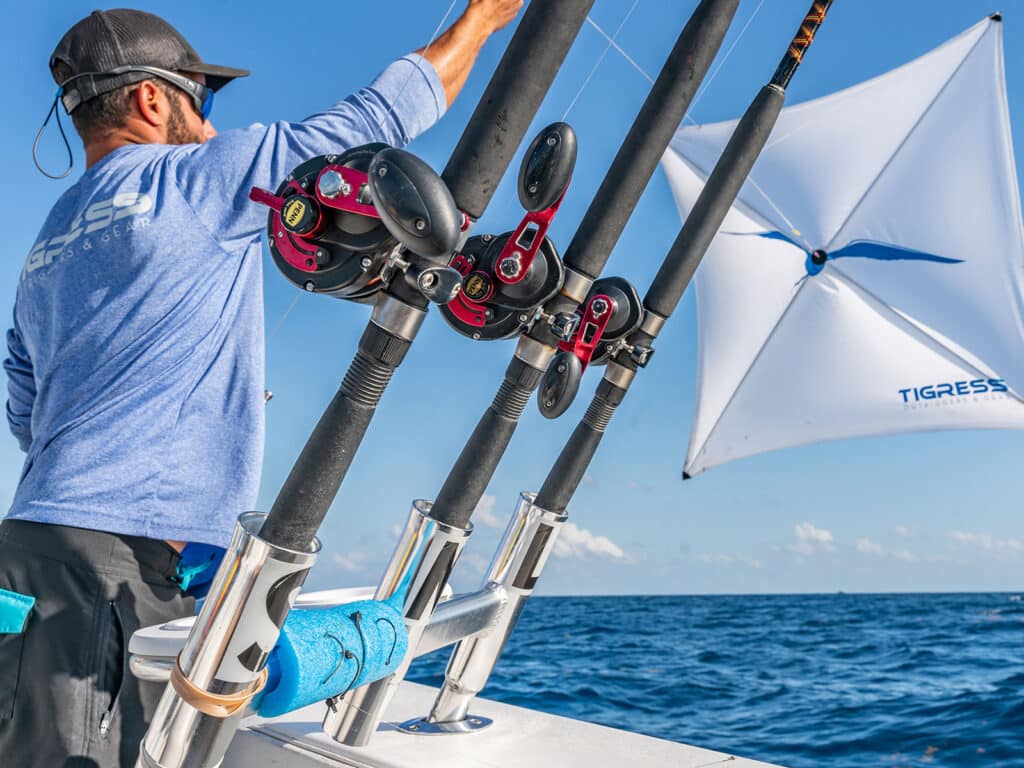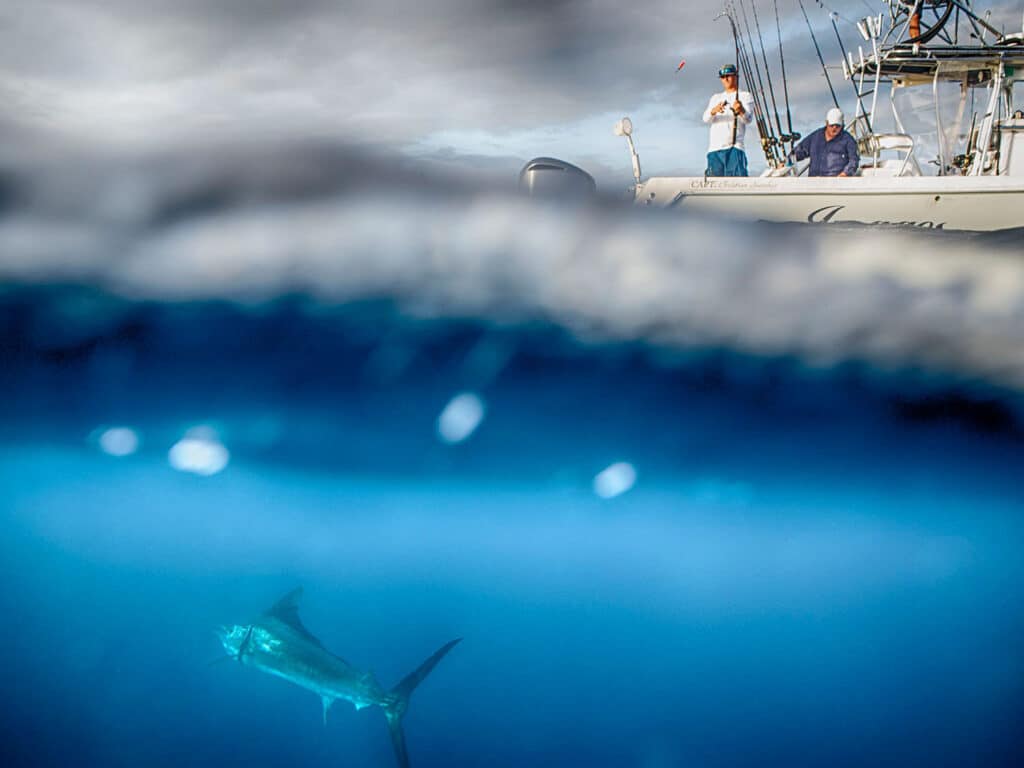
“There have been a lot of sailfish around Fowey Lighthouse,” reports Capt. Christian Sanchez, of Miami Sailfish Charters. In addition to sailfish, he’s been catching king mackerel, dolphin and blackfin tuna. That’s the exact type of action to expect during winter in South Florida and the Florida Keys.
“We had a great trip two days ago,” Sanchez says. The day’s weather featured a brisk wind that started out of the north and then switched east. “The sailfish were swimming on the surface,” he says. Using heavy spinning gear, the crew cast live baits to breezing sails. Sanchez scored seven sails out of 12 bites and he said the top boat of the day released 13 out of 16. “We were back by noon!” Earlier in the week, he scored a 50-pound mahi.
A Miami Fishing Hotspot
Sanchez has been fishing in 160 to 200 feet of water a few miles north to a few miles south of the famous Fowey Rocks Lighthouse. He is slow-trolling live bait and looking for signs of feeding fish. “Flying fish and feeding birds are a good indicator,” he says.
Sanchez starts the day catching live bait with sabiki rigs. “There has been a lot of bait at the turning basin in Government Cut, the range marker and farther south at Marker 21.”
Once Sanchez has a livewell full of herring, pilchards and goggle eyes, he heads for the sailfishing grounds. He flies two kites and pulls seven baits. Sanchez runs three live baits off each kite: goggle eye are farthest out, then herring, and finally a pilchard close to the boat. Sanchez says, “The larger bait is easier to keep in the water, so we put it on the longest line.”
Down the center of the spread, he swims a deep bait behind a 2- to 4-ounce inline sinker.

He uses PENN Carnage II 30- to 50-pound boat rods and a PENN Fathom II 40 reel. The reel is filled with 20-pound test monofilament fishing line. “Anything heavier than 20 pound and the wind puts a bow in the line making it hard to run the baits and set the hook.”
The monofilament mainline is attached to 15 feet of 40-pound fluorocarbon line with a Bimini to no-name knot. Sanchez’s live-bait rig consists of 15 inches of No. 4 wire and a 5/0 Mustad inline circle hook.
Sailfish Double Hookups

One of the toughest challenges in sport fishing is taming a multiple hook up of two or more sailfish. According to Sanchez, the secret is predicting the direction the fish will run. “Most of the time they go south into the current,” he says.
However, when the fish run different directions, “I chase the one that went the wrong direction first.” Sanchez explains the fish swimming north or east will eventually turn south and he can intercept it. Then, with one fish released, he can chase the second fish.
After releasing multiple fish, Sanchez turns the boat and runs south. “If you get a double or triple, I know there are 20 more down there.” He runs past where he scored the bite and sets out the baits for another shot at the school.
Sanchez expects sailfishing to continue throughout the winter. At the end of February he looks forward to smoker king mackerel mixed in with wahoo and dolphin. He anticipates the arrival of big blackfin tuna with the peak season in April.








